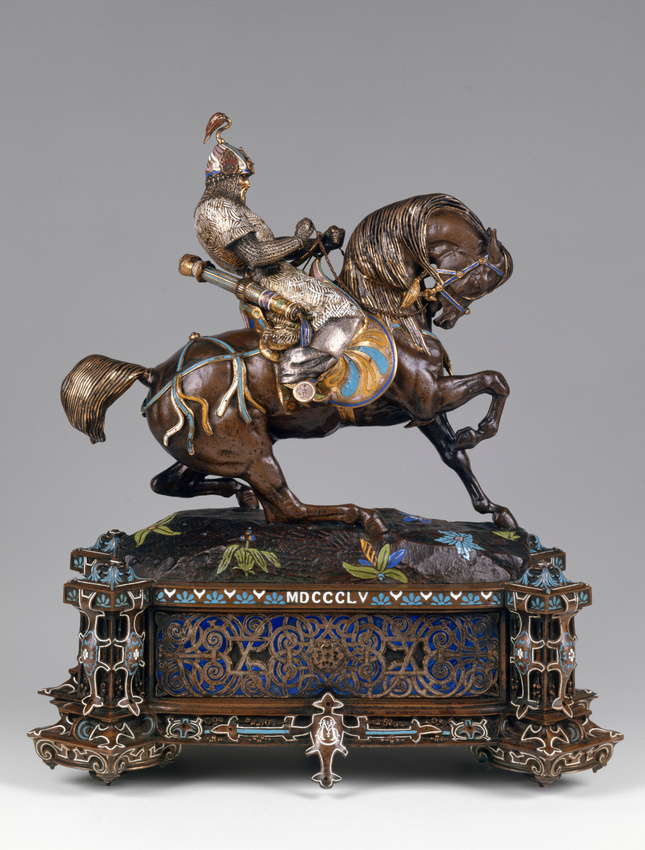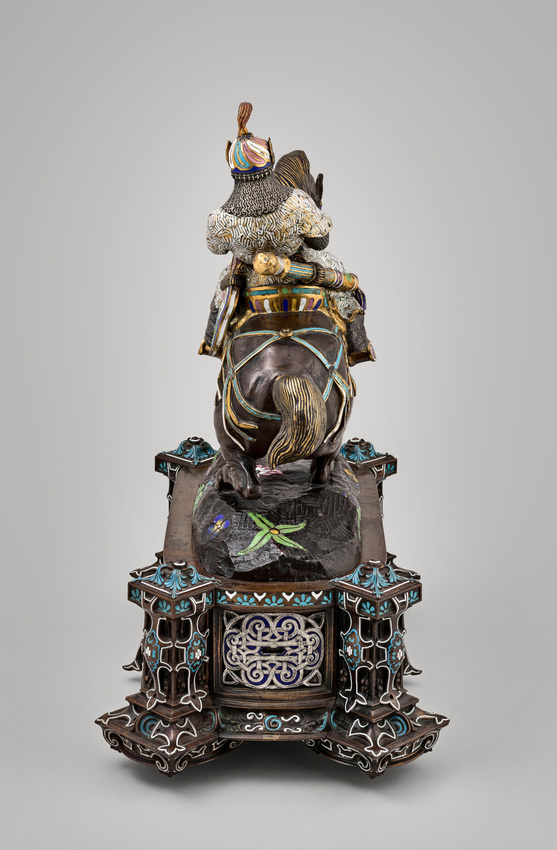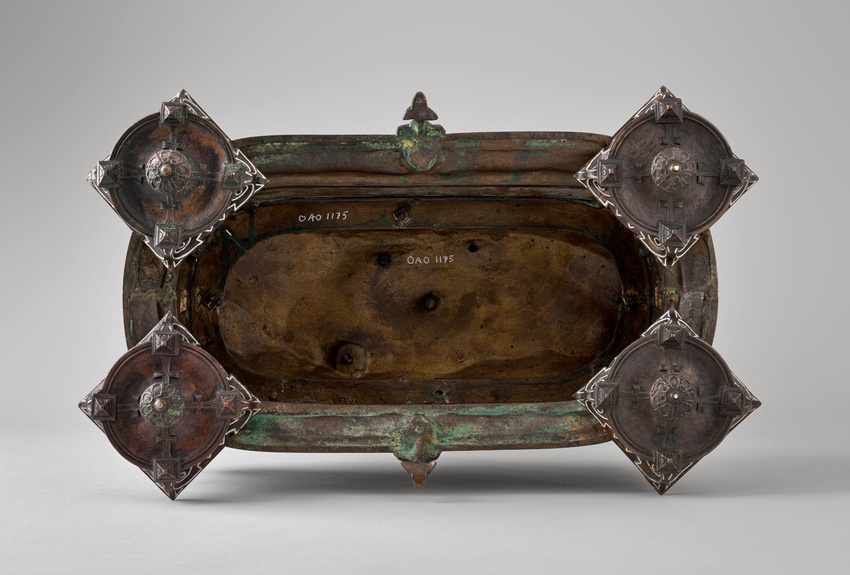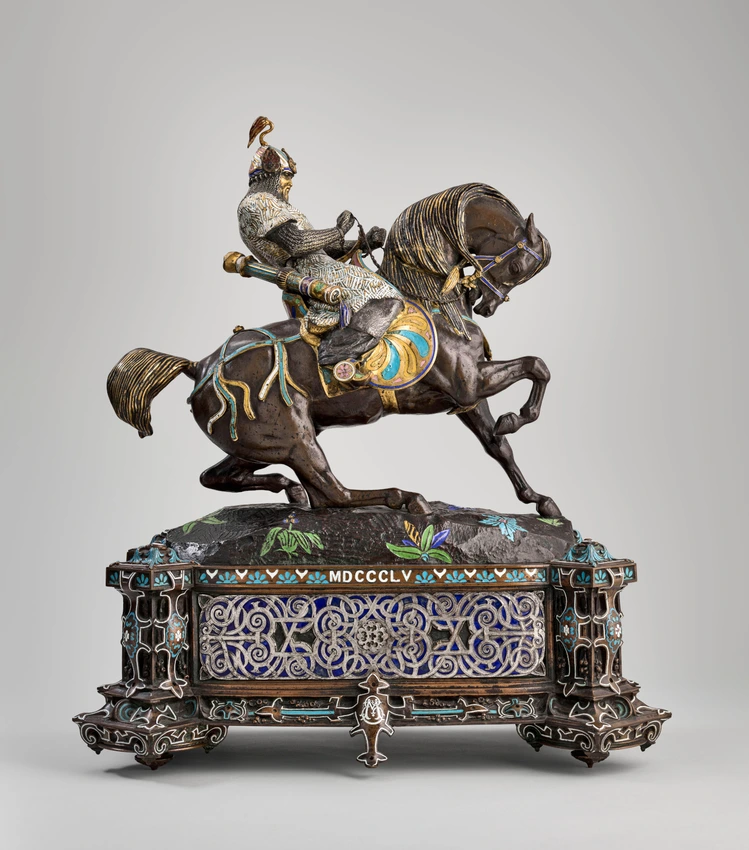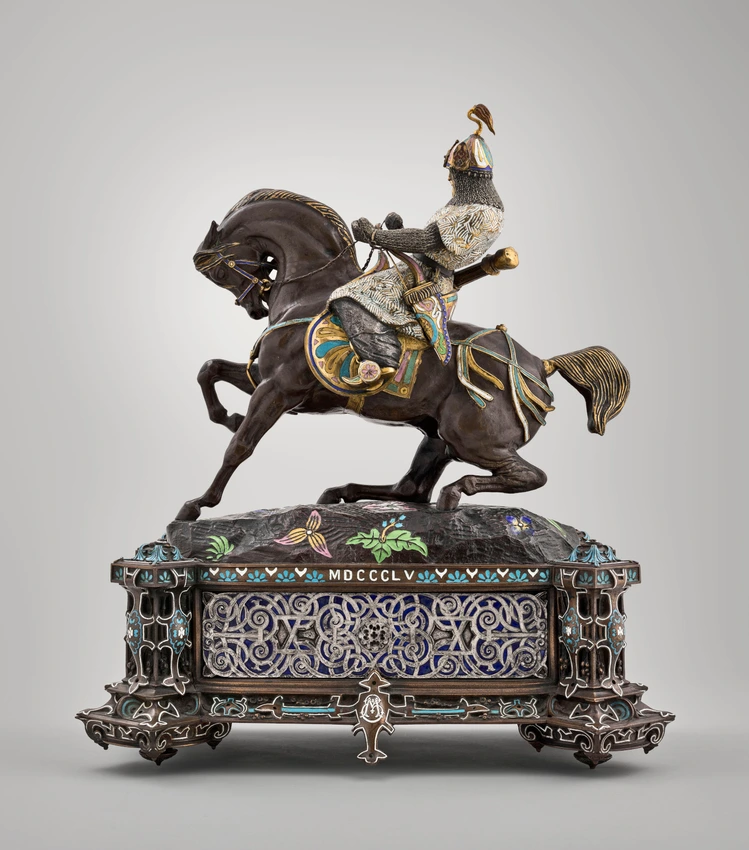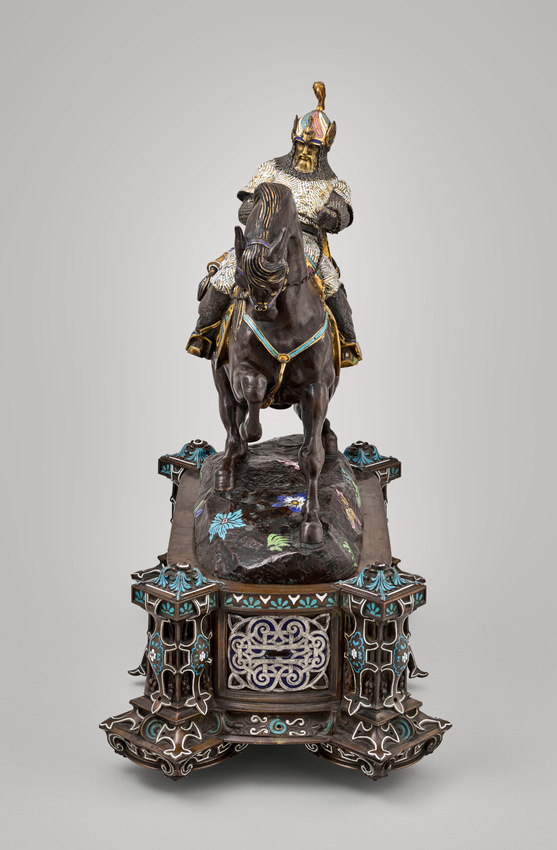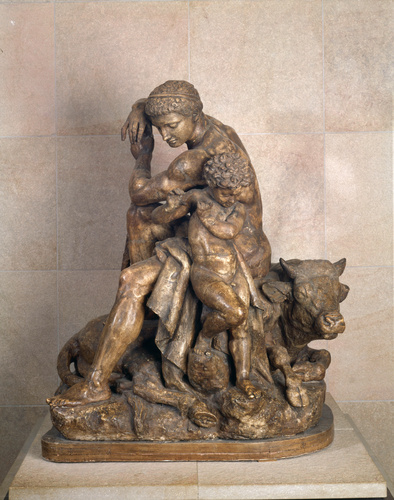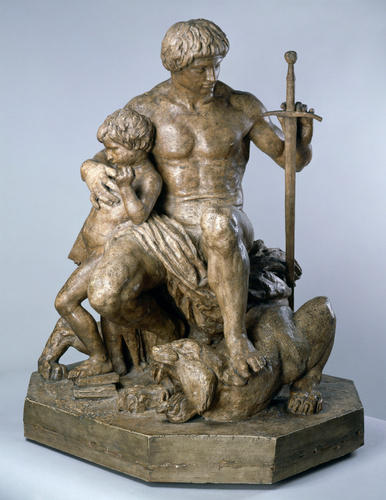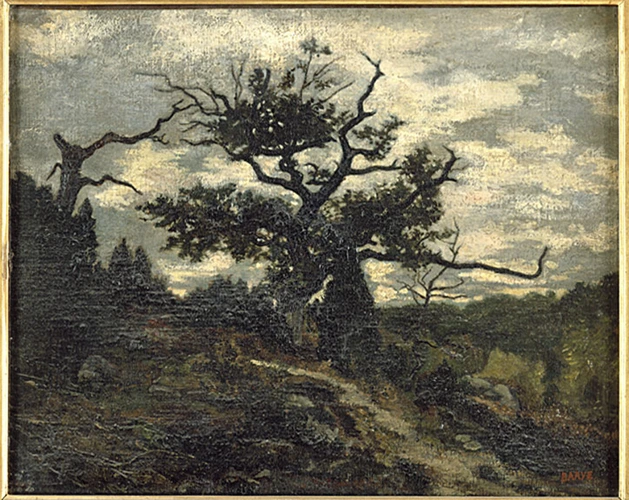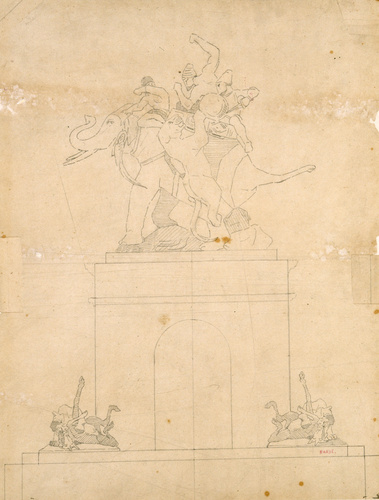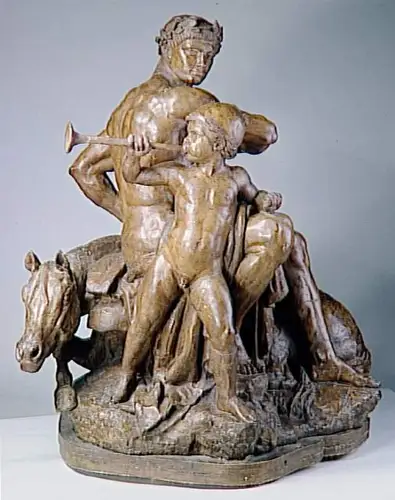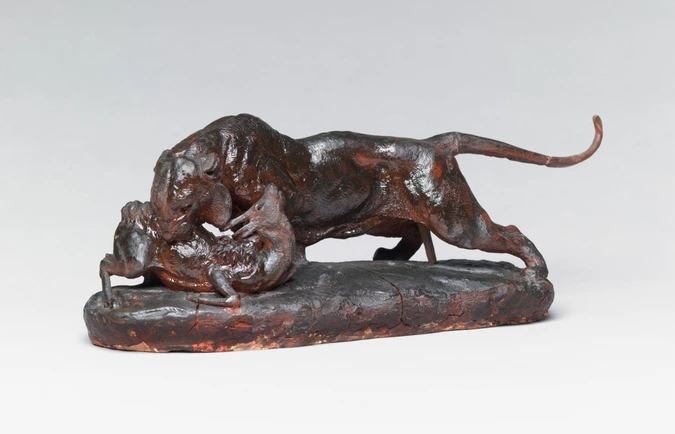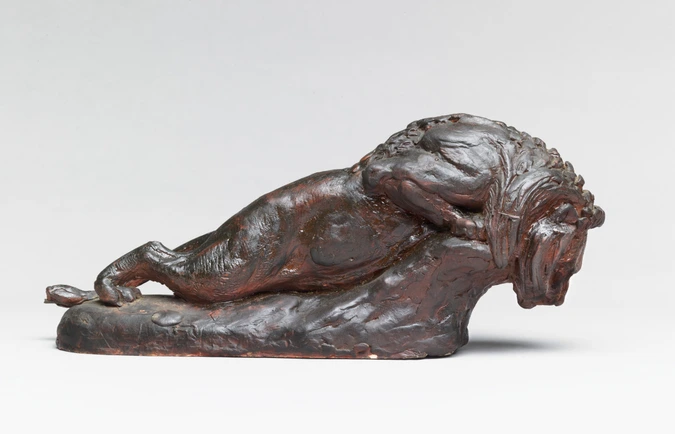Guerrier tartare à cheval
Among Barye's bronzes are some exceptional castings adorned with champlevé enamels. They all appear to come from the collection of Emile Martin. Having worked in partnership with the sculptor at Barye and Co, this engineer, director of the Fourchambault foundry, worked on the commercialisation of the artist's bronzes from 1845 to 1857. The bold idea of these bronzes enriched with bright colours certainly came from Martin himself. In fact, an interpretation like this, which tended to transform a work of statuary into an object of pure decoration, was not to Barye's taste! However, if there is one model by the famous sculptor that this rich colouring suits perfectly, it is this fierce Tartar warrior. The use of both enamel and gilding is not fortuitous: it underlines the purely imaginary exoticism of the warrior.
The many other versions of this same subject do not generally include a neo-Renaissance base, and retain the more familiar look of patinated bronze. This polychrome example seems to be unique. The date of 1855 engraved on the base corresponds to the first Universal Exhibition in Paris. Barye was awarded a gold medal on this occasion. The Tartar Warrior, in patinated bronze, features in the catalogue of the works he submitted. One can easily imagine the success of this type of picturesque statuette with a bourgeois clientele, always keen to acquire yet another decorative object.
